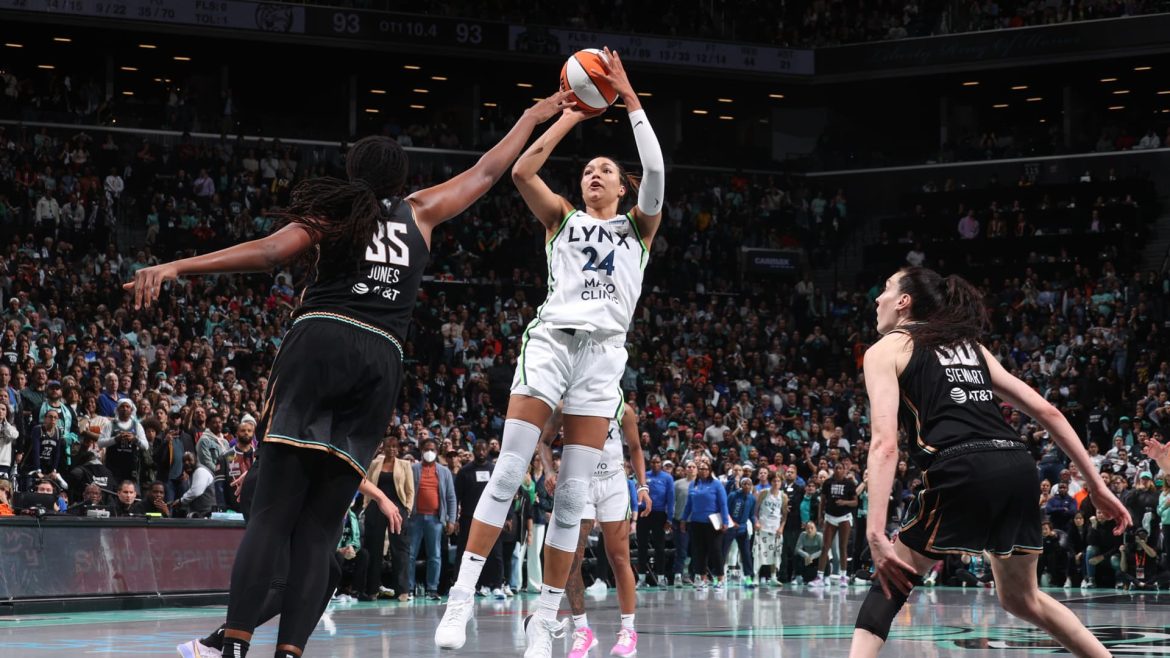The Women’s National Basketball Association (WNBA) is on the cusp of a transformative era, one that promises to redefine the landscape of women’s professional sports in the United States. The league’s recent announcement to expand from 15 to 18 teams by 2030, with new franchises in Cleveland, Detroit, and Philadelphia, marks a pivotal moment in its history. This strategic move is not merely about increasing the number of teams; it represents a concerted effort to solidify the WNBA’s presence in key urban markets with rich basketball traditions and passionate fan bases. The expansion is poised to enhance player opportunities, broaden the league’s appeal, and elevate the overall quality of women’s professional basketball.
The expansion plan is carefully structured to ensure a smooth transition and maximize the potential of each new market. Cleveland will become the 16th team in 2028, followed by Detroit in 2029, and Philadelphia in 2030. Each city offers a unique blend of sports culture, economic potential, and demographic diversity, making them ideal candidates for WNBA expansion. Cleveland, home to the NBA’s Cavaliers, boasts a fervent sports fan base and a well-established sports infrastructure. The new WNBA team will play in an existing NBA arena, leveraging the city’s existing facilities and fan enthusiasm. Detroit, known for its resilience and deep sports culture, will also utilize an NBA arena, benefiting from the city’s ongoing revitalization efforts. Philadelphia, on the other hand, plans to inaugurate a new arena specifically for the WNBA team, underscoring the city’s ambition to become a premier market for women’s basketball. This investment in facilities is expected to enhance the game-day experience for fans and attract new sponsorships and media attention.
The selection of Cleveland, Detroit, and Philadelphia as expansion cities is deeply strategic. These cities are not only historic basketball hubs but also offer substantial metropolitan areas with diverse, passionate populations. The rich basketball traditions of these cities, from the NBA to college basketball, provide a fertile ground for the WNBA to grow and thrive. The economic and demographic factors of these markets support sustainable team growth, attracting corporate sponsorships, local media attention, and community engagement. Additionally, these cities have shown increasing support for women’s sports and gender equity initiatives, indicating a cultural readiness that suggests WNBA teams here would resonate well with local values and social movements. The expansion also presents an opportunity for urban renewal, as the new franchises can act as catalysts for community pride and economic benefit, strengthening the relationship between professional sports and urban development.
The impact of this expansion on the WNBA and women’s basketball as a whole is profound. With more teams, the league can offer increased opportunities for emerging talent, providing more roster spots and enhancing the visibility and career development of female athletes. The broader fan base attracted by new cities will lead to more media markets, sponsorship deals, and overall league revenue, which in turn can be reinvested into better salaries, improved facilities, and heightened player welfare. The expansion also intensifies competition, raising the league’s profile and enhancing the quality of play. New rivalries and dynamic matchups are expected to captivate fans and elevate the overall excitement of the game. Furthermore, the expansion attracts more corporate partners eager to align with a socially progressive, fast-growing league, and media rights deals will benefit from a wider footprint and more content, fueling broadcasts and digital engagement.
However, the path to expansion is not without its challenges. The WNBA must carefully navigate logistics such as competitive balance, ensuring that the integration of new teams does not compromise the league’s overall competitiveness. This requires a well-managed expansion draft and salary cap adjustments. Additionally, the league must be mindful of market saturation risks, ensuring sustained fan interest amid a crowded sports landscape through savvy marketing and community outreach. The readiness of facilities and operational support in each city is also crucial, as first-class facilities and operational support impact team success and fan experience. Economic viability is another key consideration, as expansion fees reportedly set new records, highlighting the importance of financial backing. Teams must balance initial investments with long-term sustainability to ensure the success of the new franchises.
Looking ahead, the WNBA’s expansion into Cleveland, Detroit, and Philadelphia signals a bold vision for the league’s growth. By leveraging cities steeped in basketball culture and emerging urban vitality, the WNBA is not only increasing its competitive landscape but embedding itself more deeply into America’s sporting fabric. This expansion enhances opportunities for female athletes, broadens fan engagement, and further legitimizes women’s basketball as a premier professional sport. As these teams prepare to take the court in the coming years, the league’s momentum suggests an exciting era ahead, marked by greater visibility, diversity, and shared passion for the game. The WNBA’s evolution exemplifies how strategic expansion can revitalize league dynamics and foster inclusive, sustainable sports communities. The next five years will offer a compelling story of growth, competition, and cultural impact destined to redefine the future for women’s basketball.





